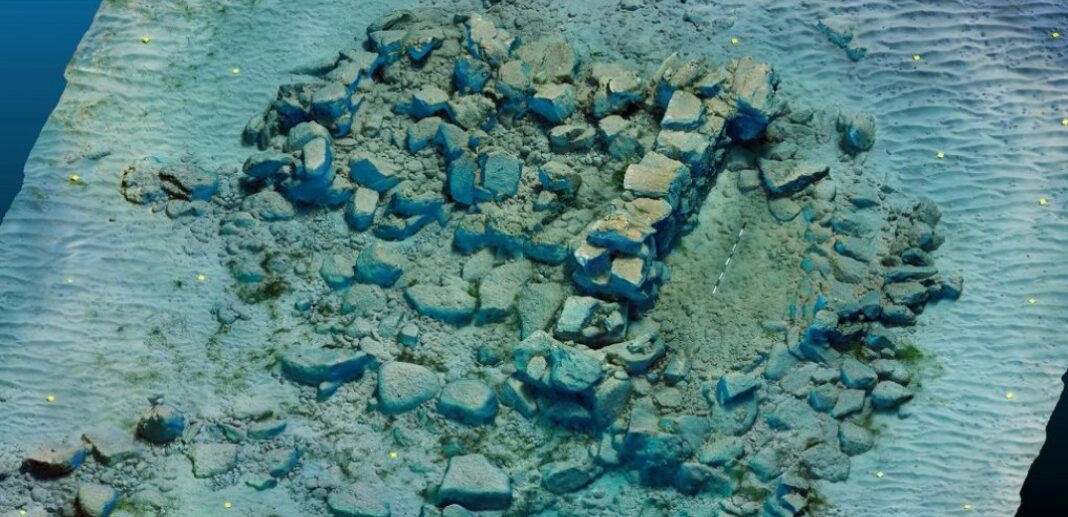The existence of an underwater ancient coastline, in the zone of which there are respectively sunken building remains of at least two periods, the Minoan and Roman eras, as well as a shipwreck of the 2nd c. AD, was found during the underwater research of the Ephorate of Underwater Antiquities in the Gulf of Palekastro, Sitia, Crete. The research, which was completed in August, is conducted in collaboration with the University of Toronto, the Ephorate of Antiquities of Lassithi and the British School of Athens.
According to a statement from the Ministry of Culture and Sports, the research, part of a three-year program of four agencies, launched this year, aims to investigate the coast and the wider area of the bay to determine the extent of use and the form it had in the various phases of antiquity, while planned for the coming years and rescue excavation in the area of Bondalaki, where structures of Minoan times are tested by the waves.
During the underwater research, the coastal zone was investigated and the existence of a submerged ancient coastline was found, in the zone of which there are correspondingly submerged building remains of at least two periods. In the middle and south of the gulf of Kouremenos, various building structures and large shells of pithos were found, embedded in the rocks of the seabed, which are attributed to the Minoan chronological horizon.
To the north of the bay, a sunken jetty of Roman times, known since the 1980s, was relocated and documented, on the occasion of the construction of the port shelter. In the immediate vicinity was found an area that saves walls and decomposed building material of corresponding Roman buildings. The image observed in the north of the gulf of Hiona is similar, where similar fallen walls, floors and foundations show a Roman settlement at this point as well.
But in a more brilliant way -continues the announcement of the Ministry of Culture-, it shows the hitherto unknown use of the space during the Roman period, the location of a shipwreck with a load of amphorae of the 2nd c. AD, probably coming from the Iberian Peninsula. The cargo is preserved in a fairly good condition and seems to be an important element in the discussion of the patterns of ancient trade and the corresponding naval routes that cross the Mediterranean and include Crete in this period.
The above documentation included archaeological photographic and cinematographic documentation and 3D images of the structures and the wreck, as well as aerial shots along the shores to create orthophoto maps and the geographical and archaeological correlation (GIS) of the finds.
The research team included: Theotokis Theodoulou-Dr. archaeologist, Georgios Tsimpoukis-Dr. archaeologist and Giannis Ktistakis-designer of the Ephorate of Marine Antiquities, as well as the volunteers Alexandros Tourtas-Dr. Varisos – Dr. of the support vessel. Professor Carl Knappett of the University of Toronto worked closely with the team, which also covered the cost of the research.
SOURCE: AMNA







